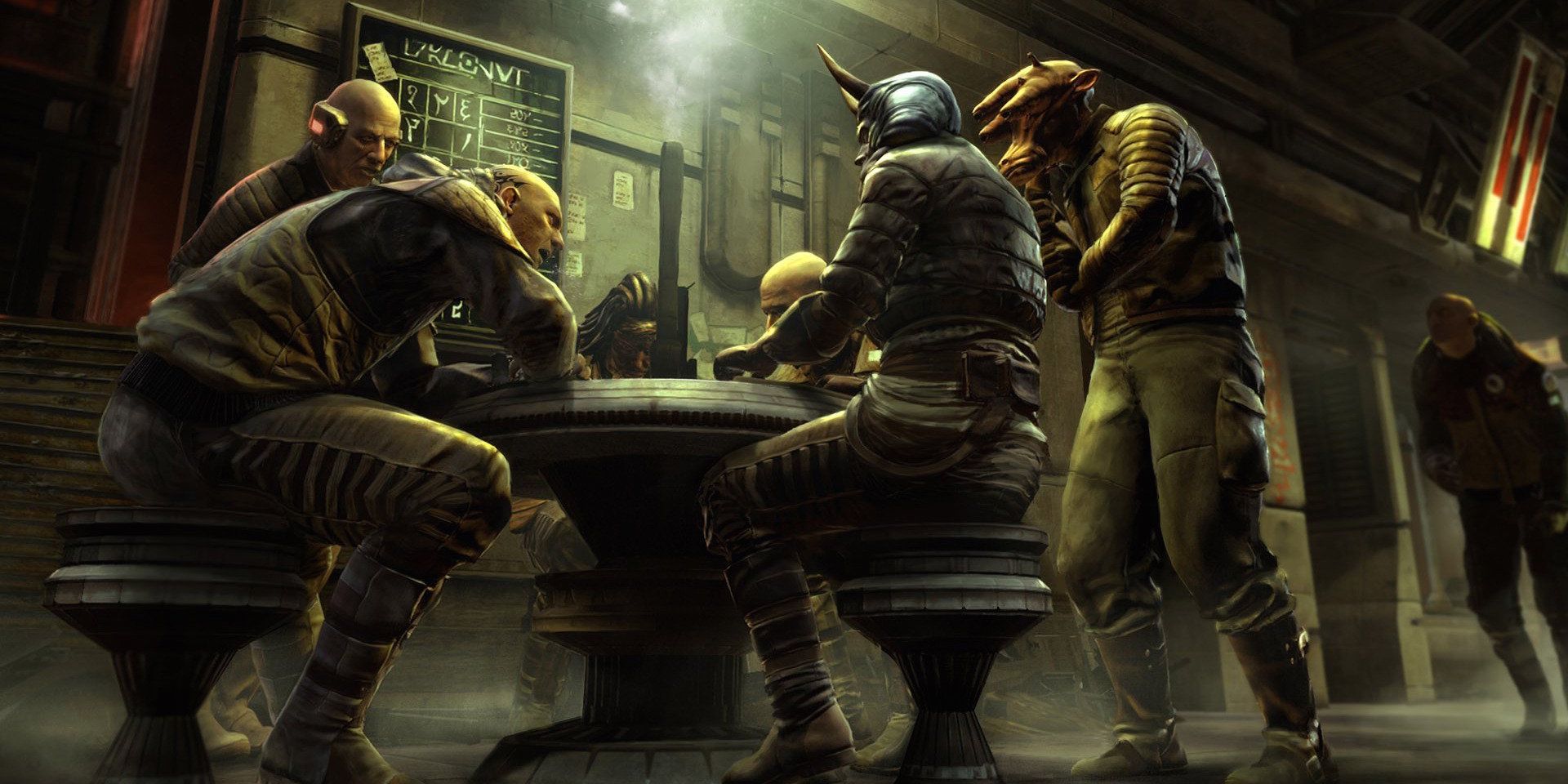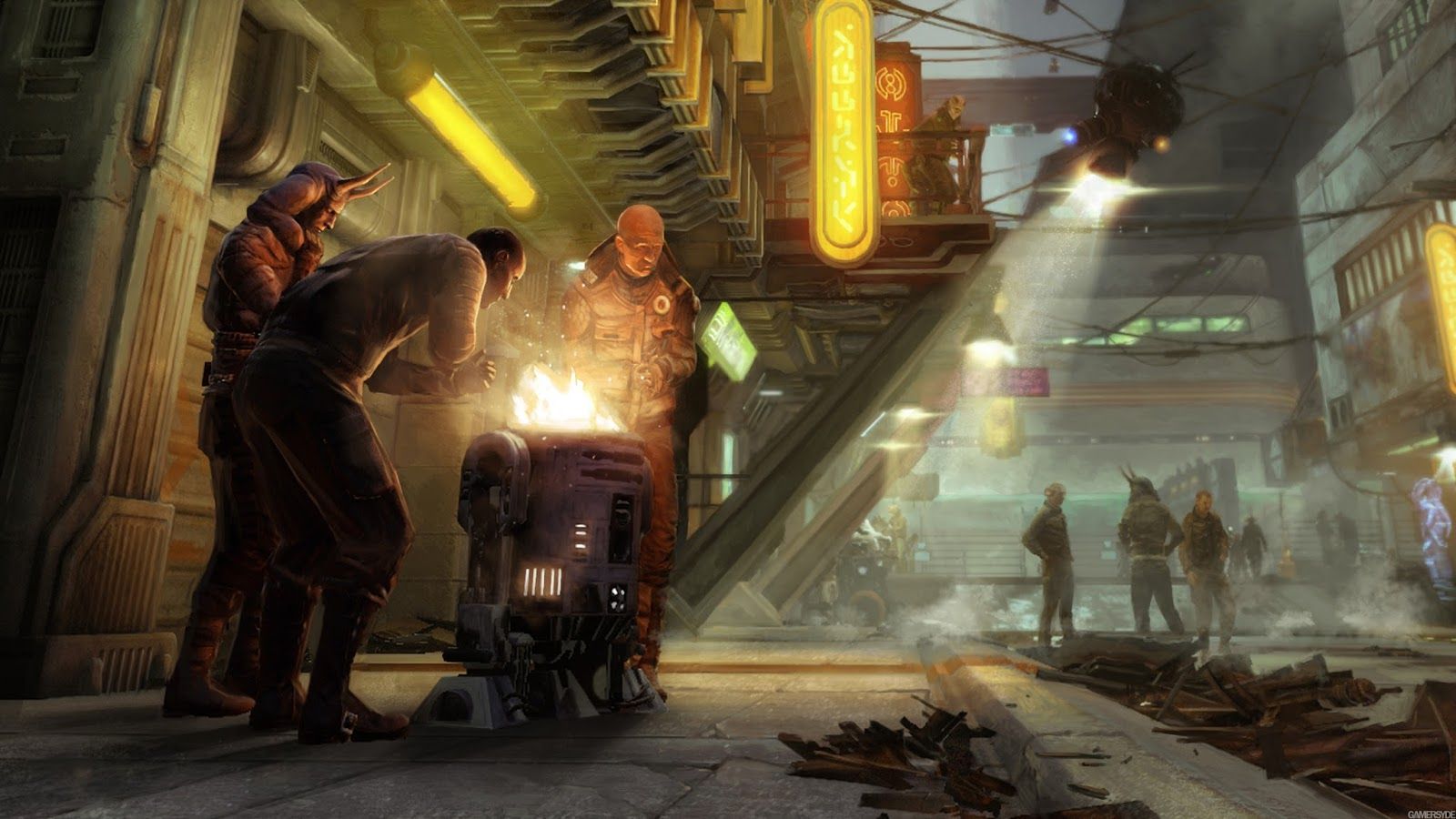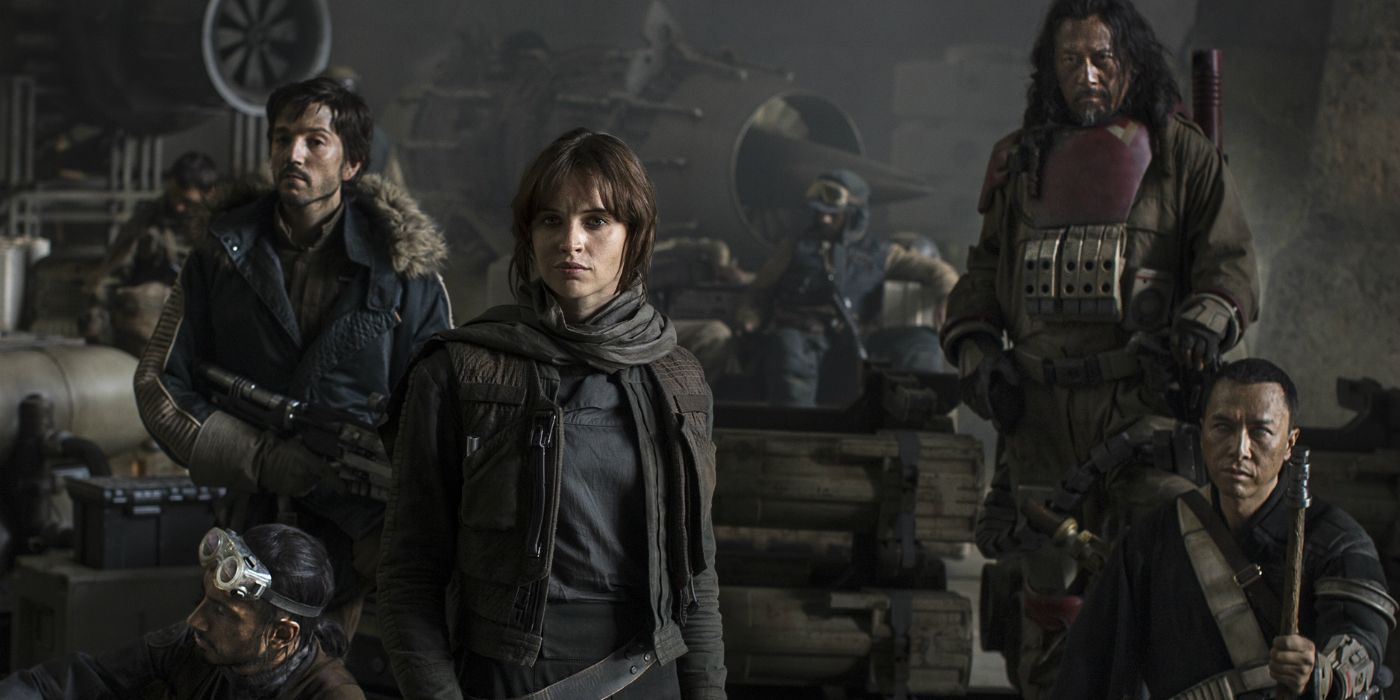A live-action adaptation of a galaxy far, far away is finally coming to the small screen, but haven’t we heard that before? Ardent Star Wars fans would be remiss if they didn’t feel the tug of deja vu last Thursday when Disney CEO Bob Iger announced that the beloved sci-fi series would be developed into a live-action show set to debut on Disney’s yet-named streaming service.
The announcement sounds a lot like another, made back in 2005, before Lucasfilm was swallowed up by the Disney machine. George Lucas had the same idea, to bring a live-action version of the Star Wars universe to TV sets all around the world, but the plan fizzled and the series, codenamed Star Wars: Underworld, was shelved. Could this new announcement mean that the series is coming back from the dead, or are we looking at something completely different? If it’s the former, then are these resurrected scripts really something we need?
Wait, What’s Star War: Underworld?
The aim of Star Wars: Underworld was ambitious from the beginning. First announced by Lucas at Star Wars Celebration III in 2005, the series would have bridged the gap between the prequel trilogy and the original trilogy, revealing what happened in the intervening years between Star Wars: Revenge of the Sith and Star Wars: A New Hope. It was a massive announcement then.
These days, you can’t throw a stick without hitting a Star Wars side story. Rogue One: A Star Wars Story touched on this time, following the suicide mission that led to the Death Star plans landing in the hands of the Rebel Alliance. Similarly, the Star Wars Rebels animated series has made its home in this liminal space between the two trilogies. But back in 2005, hot off the heels of Revenge of the Sith, the idea of a big-budget Star Wars television show wasn’t just unheard of, it was staggering.
The show would have focused on the Coruscant underworld, a community that’s briefly touched on in Star Wars: Attack of the Clones. According to Lucas himself, the series turned away from the ‘30s adventure film influence that had defined the movies up to that point, instead drawing on the noir boom of the ‘40s -- think The Postman Always Rings Twice or The Maltese Falcon, but in space.
RELATED: The 15 Craziest Star Wars: The Last Jedi Fan Theories (That Might Actually Come True)
The series would have peeled back the idyllic, jokey veneer of the Star Wars universe to reveal a world that real people lived in, where the Jedi had seemingly been eradicated and the Empire was slowly consolidating its power. Iconic Star Wars characters showing up wasn’t a guarantee, but a Boba Fett arc was hotly rumored and all but became a statement of fact after author Karen Traviss’ Expanded Universe book that focused on the bounty hunter was scrapped because of potential canon clashes with the show.
Even those left disillusioned by the prequel trilogy had to admit the slightest glimmer of hope; the show had managed to attract a veritable who’s-who of sci-fi television writers. The team managed to churn out roughly 50 scripts before the series was shelved. Among those writers were Stephen Scaia (Jericho, Limitless, Warehouse 13), Chris Chibnall (Doctor Who, Torchwood, Broadchurch), Matthew Graham (Childhood’s End, Philip K. Dick’s Electric Dreams, Doctor Who) and Ronald D. Moore (Battlestar Galactica).
With such a powerful writers’ room and more than a season’s worth of scripts already locked in after years of work, it’s hard to imagine a series like this – an officially announced Star Wars series, nonetheless – collapsing in on itself. But Lucasfilm was a different beast then, and the cracks became apparent.
Star Wars: Underworld Goes Under
The show’s primary downfall was its budget. Star Wars: Underworld might have been announced back in 2005, but the series took years to get going. Lucas wanted a season’s worth of scripts ready to go for when he worked out an agreement with a network. Once a deal had been cemented, script work would have transitioned to a second season. It was never to be.
The 2007-2008 financial crisis put nearly every media industry into a state of upheaval. Movie studios became austere, game developers shut down, authors turned to e-book publishing and it was harder than ever to get a big, expensive television show, even one with the Star Wars brand behind it, okayed by network executives who just couldn’t see the path to a reasonable return on investment.
Some Lucasfilm staffers didn’t make the bargaining any easier. The show’s producer, Rick McCallum, balked at deals that allowed networks to have a say in the future of Star Wars, calling them “repugnant” and antithetical to the way Lucasfilm worked.
RELATED: Star Wars: The Last Jedi TV Spot Shows Luke Board the Millennium Falcon
On top of all that was Lucas’ obsession with the appearance of the thing. He and McCallum were trying to cram the same amount of visual effects they achieved in a single Star Wars movie into every episode on a budget of $5 million per episode. That’s around the same amount Marvel Television spends on a single episode of Daredevil. While the Man with No Fear’s solo Netflix show is no slouch visually, it’s also no Star Wars.
This isn’t ten years ago, though, and Lucasfilm isn’t looking to put the newly announced Star Wars show on network television, or even cable. Disney is choosing to eschew all of that and head straight for its own vertical-oriented streaming service; a place for all things Disney. Here, the company will have full, perfect control of what goes into each episode so that continuity with the movies can be maintained.
Would Star Wars: Underworld Work Today?
So, could those 50 hours of scripted television that was Star Wars: Underworld eventually make their way to the small screen, finally debuting more than 10 years after the series was initially announced? Perhaps. The scripts were sold off to Disney in the buyout, so presumably they’re still on a shelf or hard drive somewhere deep in the Disney vault. Perhaps the better question is: Would those stories hold any weight in this new era of Star Wars?
Star Wars Rebels has handled Underworld’s proposed time period with aplomb, making the scrapped live-action show feel all the more unnecessary. Rebels has taken pains to present the Empire’s expansion with care and dignity – and a little dash of fan service thrown in. Viewers even got to see the long-awaited rematch between Obi-Wan Kenobi and Darth Maul (brief and sad as it was). New heroes and villains have risen in the meantime and the complicated glitz and glamor of Coruscant has receded into the background, a thing of the prequel trilogy – a time not many Star Wars fans want to revisit, and which Disney has been adamant about distancing itself from.
RELATED: Star Wars: The Last Jedi Projected to Have 2nd-Highest Opening Ever
Chaining an announcement about a live-action Star Wars series to pre-Disney era scripts seems like a recipe for disappointment. The possibilities for a Star Wars television series are, after all, endless. The formula might be worth replicating, though. Much like Star Wars: Underworld sought to capitalize on the success of Revenge of the Sith around the time of its release, it’s possible the new show will act as a bridge between the current Skywalker trilogy and Rian Johnson’s newly announced trilogy – kind of like the Star Wars version of Agents of S.H.I.E.L.D. The movie stories will be going on in the background, but seen from the perspective of a more Rogue One-like cast; small players in a grand epic who aren’t Force-sensitive demigods.
No matter how Disney decides to spin this new series, the likelihood of returning to Star Wars: Underworld is very, very small. If not because the prequel trilogy is the era most Star Wars fans are desperate to forget, then because television has changed dramatically in the past decade. In the end, those scripts might never see the light of day, but if they do they will be a reminder of a particular point in Star Wars history – a time when Lucasfilm, and Lucasfilm alone, ruled a galaxy far, far away.
Star Wars: The Last Jedi is the next film in the Star Wars franchise. Opening Dec. 15, Star Wars: The Last Jedi features returning cast members Mark Hamill as Luke Skywalker, Carrie Fisher as General Leia Organa, Adam Driver as Kylo Ren, Daisy Ridley as Rey, John Boyega as Finn, Oscar Isaac as Poe Dameron, Lupita Nyong’o as Maz Kanata, Domhnall Gleeson as General Hux, Anthony Daniels as C-3PO, Gwendoline Christie as Captain Phasma and Andy Serkis as Supreme Leader Snoke, joined by franchise newcomers Kelly Marie Tran as Rose, Benicio del Toro as “DJ” and Laura Dern as Vice Admiral Amilyn Holdo.



